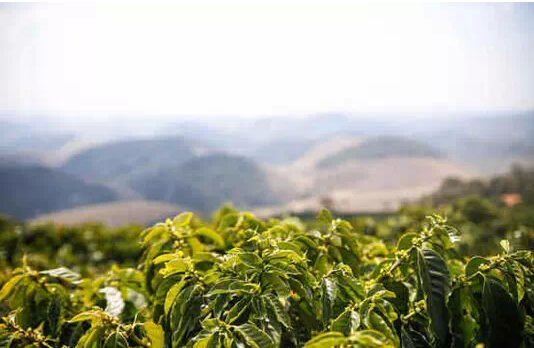What are the nine links to distinguish between "good coffee" and "bad coffee"?
1. Microclimate where coffee beans grow.
Coffee comes in many shapes and sizes, and although most of them are the same shape, it is best to grow specific varieties according to different local microclimates. The best farmers will adjust measures to local conditions.
2. Picking time
At the end of the harvest season, coffee beans are picked before they are fully ripe in preparation for the next season. Most of these coffee beans are classified as bad varieties called "subgrade" because they are not ideal.
3. Baking
Whether to highlight the ideal characteristics or cover up the defects in the roasting process not to mention that any baker, even ordinary people, can produce dry, gray and dark coffee. This is a way to cover up defects, to produce more complex fruity or caramel-flavored coffee, high-quality coffee beans and attention to detail are indispensable.
4. Drying treatment
Once the coffee beans have been picked, there are several different ways to dry the beans. The easiest way is to leave them outside for a few weeks, or use an expensive dryer. High-quality coffee beans are tested at any time to make sure they don't get moldy, while poor ones are left unattended in the sun because labor costs are too high.
5. Whether the coffee is cooled with water
Whether coffee is cooled with water too many beans are roasted at one time in a large coffee roaster, so it is impossible to use air to cool down and need to spray water mist quickly inside. Although there is no obvious data, many bakers believe that although the water evaporates quickly, if the water comes into contact with the coffee beans, it will reduce the overall quality.
6. The quantity of coffee purchased by the roaster
From the perspective of farm grade, there is a direct relationship between quality and quantity. The quantity of high-quality coffee in the world is by no means sufficient for large roasters. Small companies can buy 5-10 bags, as well as other high-quality coffee for limited or small-scale operations, but these quantities are far less than a batch order from a large roaster. Once a roaster reaches a certain scale, their ability to provide high-quality coffee is greatly reduced.
7. Storage time
If the coffee beans used in the coffee shop come from a good local baker, they are coffee beans within a week, which ensures freshness. Different from coffee beans from big brands but not of high quality.
8. Quality or quantity
In order to expand the scale, many manufacturers will eventually sacrifice quality because of the quantity of production. When roasting coffee beans for £2 million a week, there is no time for subtleties.
9. Analysis of coffee aroma
What makes coffee special is its fragrance. Although professional bakers often think it silly to take taste notes, if a company uses general terms such as "smooth" or "blod", it shows that they are not trying to present more subtle features.

Important Notice :
前街咖啡 FrontStreet Coffee has moved to new addredd:
FrontStreet Coffee Address: 315,Donghua East Road,GuangZhou
Tel:020 38364473
- Prev

What is hanging ear Coffee Portable hanging ear Fine Coffee brewing method recommended
Boutique coffee (specialtycoffee) is also called specialty coffee selection coffee. It refers to coffee made from a small number of raw beans with excellent taste grown in an ideal geographical environment. Depending on the special soil and climatic conditions in which they grow, they have outstanding flavor. this
- Next

Espresso men's beverage business blends espresso Brazilian beans from cafes
Espresso is basically a male drink, energetic and unpretentious, and an enhanced version of kung fu coffee for real coffee ghosts. Double does not mean doubling the amount of coffee, but the same amount of water, double the amount of coffee powder, coffee still looks like that, but the concentration has doubled. The level is equivalent to that in spirits and perfumes.
Related
- Beginners will see the "Coffee pull flower" guide!
- What is the difference between ice blog purified milk and ordinary milk coffee?
- Why is the Philippines the largest producer of crops in Liberia?
- For coffee extraction, should the fine powder be retained?
- How does extracted espresso fill pressed powder? How much strength does it take to press the powder?
- How to make jasmine cold extract coffee? Is the jasmine + latte good?
- Will this little toy really make the coffee taste better? How does Lily Drip affect coffee extraction?
- Will the action of slapping the filter cup also affect coffee extraction?
- What's the difference between powder-to-water ratio and powder-to-liquid ratio?
- What is the Ethiopian local species? What does it have to do with Heirloom native species?

